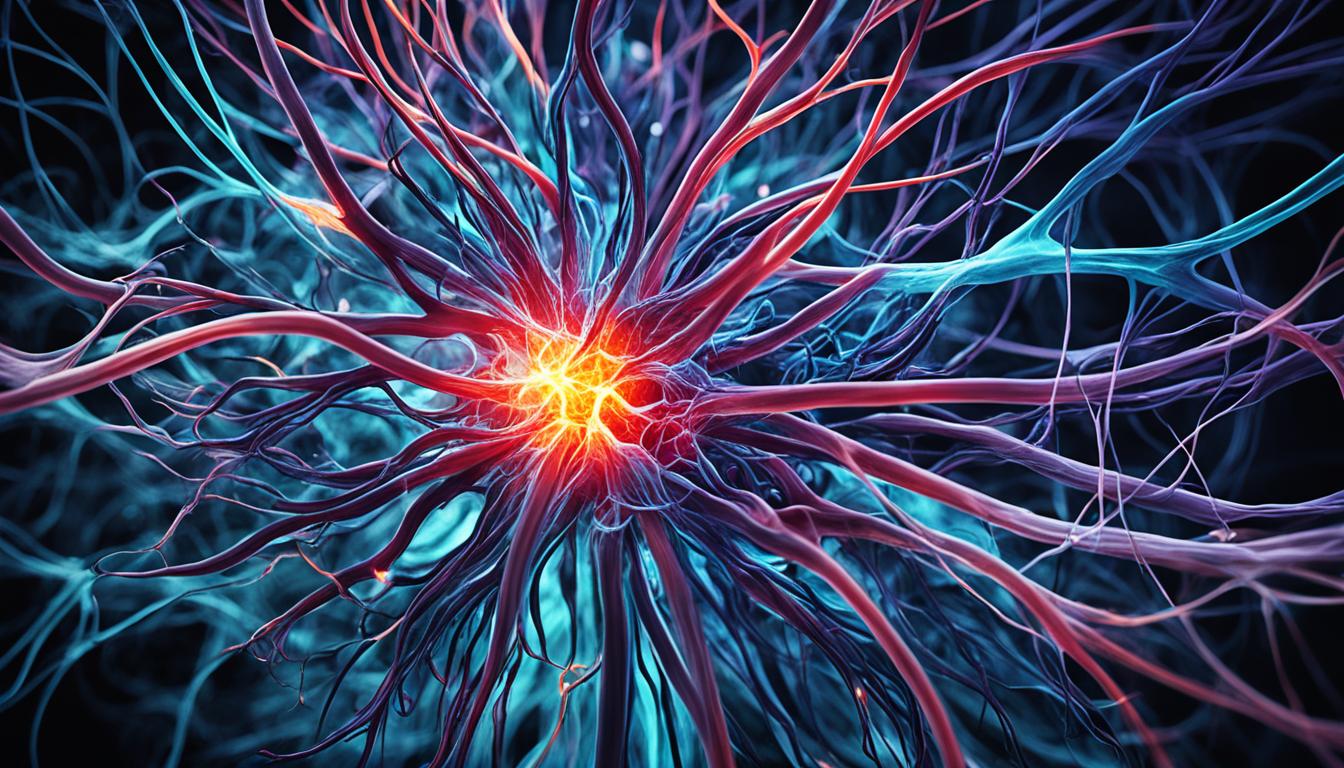Neuromyelitis optica (NMO), also called Devic’s disease or optic-spinal MS, is a serious health issue. It’s a chronic autoimmune disorder attacking the body’s central nervous system. People with NMO face repeated attacks of inflammation in the optic nerve and spinal cord. This causes various symptoms.
Key Takeaways:
- Neuromyelitis optica is a chronic autoimmune disorder affecting the central nervous system.
- Recurring attacks of inflammation in the optic nerve and spinal cord are characteristic of NMO.
- NMO is also known as Devic’s disease or optic-spinal MS.
- Patients with NMO may experience a range of symptoms.
- Stem cell therapy is a potential treatment option for NMO.
Diagnosis and Treatment of Neuromyelitis Optica
To diagnose neuromyelitis optica (NMO), doctors use a detailed method. They look at a patient’s signs, past health, and do physical checks. They also run tests in the lab. This approach helps doctors find out if someone has NMO by using both facts and how the patient feels.
A key sign of NMO is finding AQP4 antibodies in the blood. These antibodies are very important in causing NMO. When they are found in a patient’s blood, it gives doctors strong evidence for an NMO diagnosis.
But, not everyone with NMO has these antibodies. This is called “seronegative NMO.” Even without the antibodies, these people still show symptoms like problems with their eyes and spine.
Doctors also consider other things for a diagnosis. They check for diseases that might look like NMO but are not, like multiple sclerosis. This helps make sure the diagnosis is correct, so the treatment will be right.
Treating NMO focuses on stopping inflammation, preventing more attacks, and easing symptoms. It mainly uses drugs that calm down the immune system. This helps protect the eyes and spine from more harm.
New treatments, like using stem cells, show a lot of promise. Stem cells might be able to fix the immune system and help with healing. This could mean better outcomes for people with NMO.
The more we learn about NMO, the better we get at diagnosing and treating it. Doctors are always doing new studies and trying new treatments. The goal is to make life better for those with NMO.
Diagnosing Neuromyelitis Optica
| Diagnostic Approach | Description |
|---|---|
| Clinical Assessments | Doctors look at symptoms, health history, and test how nerves work. |
| Laboratory Tests | They test for AQP4 antibodies in the blood and rule out other problems. |
| Neuroimaging | They use MRI scans to look for lesions in the brain and spine. |
| Lumbar Puncture | This is a spinal fluid test. It helps find any problems in the spinal cord. |
Conclusion
In recent years, big steps have been taken in understanding and treating Neuromyelitis optica (NMO). This disease, which is an autoimmune condition, has complex effects on the nervous system. It challenges both patients and doctors.
Stem cell therapy shows a lot of promise in fighting NMO. Stem cells can help repair nerves and adjust the immune system. This gives new hope to people dealing with NMO.
Researchers are also getting closer to personalized treatments for NMO. They are finding new ways to diagnose the disease and discovering better therapies. This is a big step forward in NMO care.
The future seems brighter for those with Neuromyelitis optica because of these developments. It’s key for researchers, doctors, and patients to work together. This collaboration is important for advancing NMO research and care.

